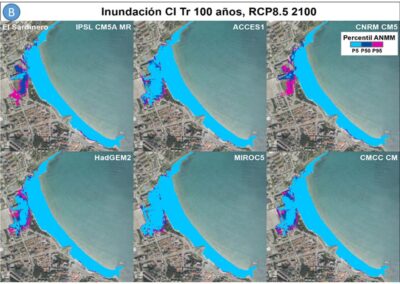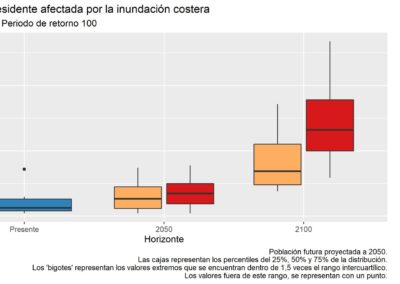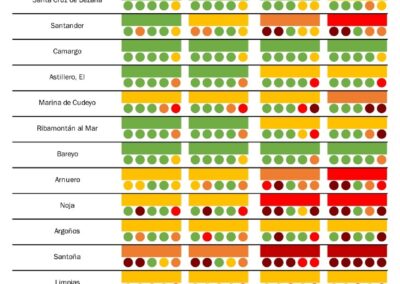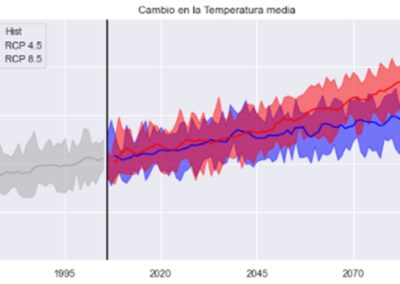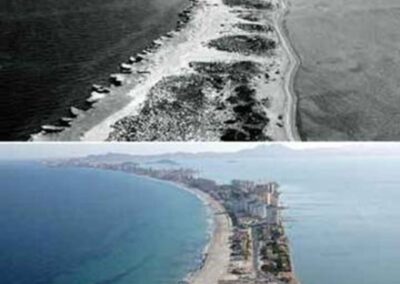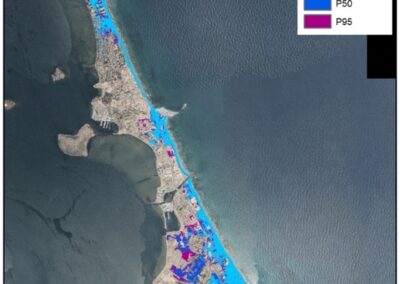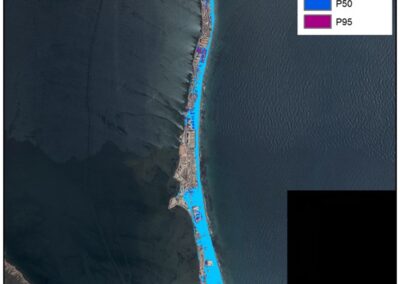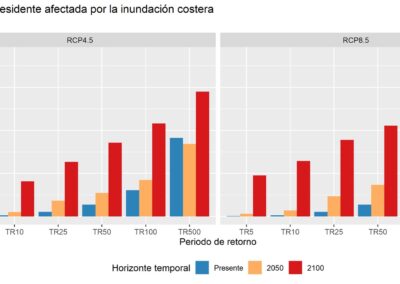ADAPTATION TO CLIMATE CHANGE ON THE COAST
“Reducing vulnerability to the effects of climate change.”


ADAPTATION TO CLIMATE CHANGE ON THE COAST
2017 – 2021
Coastal zones are highly dynamic and show great variability in relatively short time periods. This results in great fragility and vulnerability to any type of external pressure. In this context, natural and socioeconomic systems on the coast require special attention, as the impact of climate change on coastal ecosystems or on communities and assets located on the coast can have highly relevant and, in many cases, irreversible consequences.
IHCantabria addresses the impact of climate change on the coast from three fronts: the analysis of the physics of climate change, the study of its impacts and adaptation. Thus, databases, tools and methodologies have been developed that have allowed, in addition to carrying out research published in the best journals, studies and guides capable of incorporating the science of climate change into decision-making on policies and strategies for coastal protection, at continental, national, regional and local scales.
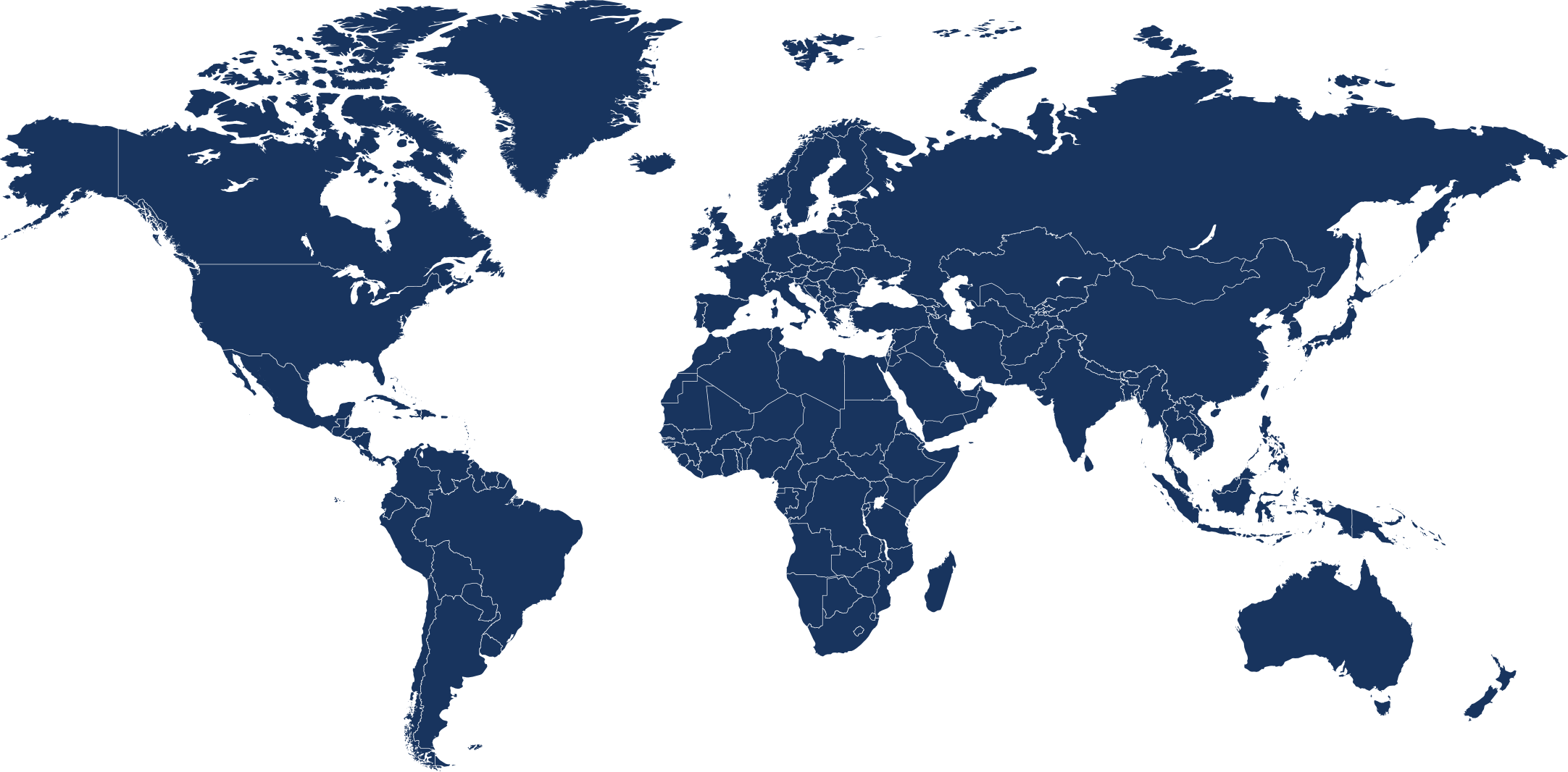
ADAPTATION TO CLIMATE CHANGE ON THE COAST
2017 – 2021
Coastal zones are highly dynamic and show great variability in relatively short time periods. This results in great fragility and vulnerability to any type of external pressure. In this context, natural and socioeconomic systems on the coast require special attention, as the impact of climate change on coastal ecosystems or on communities and assets located on the coast can have highly relevant and, in many cases, irreversible consequences.
IHCantabria addresses the impact of climate change on the coast from three fronts: the analysis of the physics of climate change, the study of its impacts and adaptation. Thus, databases, tools and methodologies have been developed that have allowed, in addition to carrying out research published in the best journals, studies and guides capable of incorporating the science of climate change into decision-making on policies and strategies for coastal protection, at continental, national, regional and local scales.


CONTEXT
-
-
- REGION, COUNTRY: Spain, Europe, Latin America, Global
- CLIENT:
Regional governments (Asturias, Cantabria, Murcia)
Ministry for Ecological Transition and the Demographic Challenge (MITERD)
Spanish Climate Change Office
European Commission
ECLAC (United Nations)
World Bank Group - SOURCE OF FINANCING:
- SCOPE: National / European / International
Ministry of Agriculture, Food and Environment (MAPA)
Spanish Climate Change Office
European Commission
ECLAC, (United Nations)
World Bank Group
-

WHAT HAS MADE THIS PROJECT UNIQUE?
-
- Supporting evidence-based decision making and innovation for contribution to the SDGs.
- Design of multidisciplinary, integrated and unique solutions to address the complexity of socio-ecological systems associated with water and ensure their resilience.
- Capacity building and knowledge transfer to new generations of professionals (research and management personnel) to promote the progress of science and society.
- Cooperation, alliances and partnerships for sustainability, as an interface between academic and business, local and global, public and private agents.

HOW HAS IT ALIGNED WITH OUR MISSION AND VISION?
-
- The whole typology of studies developed contributes to promote scientific excellence and the provision of innovative solutions with a multidisciplinary and collaborative approach, promoting the achievement of the SDGs, especially SDG 13.

WHAT LESSONS HAVE BEEN LEARNED?
-
- Characterization of climate change-induced impacts and socioeconomic risk assessment, including flooding and beach erosion, as well as the possible effects of changes in sea surface temperature on sectors such as population, housing, infrastructure, agriculture and tourism.

WHAT HAS BEEN THE IMPACT OF THE PROJECT?
-
- Analysis of the 90,000 km of coastline in Latin America and the Caribbean for ECLAC (United Nations).
- Study of the European coast for the European Commission.
- Analysis of climate change risks on the coasts of Spain, Tunisia and Qatar.
- Study of the coast at regional level in the Principality of Asturias for the Ministry of Agriculture, Fisheries and Food or on the coast of Santa Catarina for the Government of Brazil.
- Determination of climate change risks at the local scale in ecosystems, ports and cities in different locations around the world.
- IHCantabria included in the Nairobi Work Program and in the Climate Technology Center & Network (CTCN) of the United Nations as a technology service provider.

WHY HAS IT BEEN SUCH A SUCCESS?
- Understanding climate variability or long-term changes in mean sea level, meteorological tides, waves, precipitation or river flow, or having the ability to project these changes into the future under different emissions scenarios.
- Integration of the physics of climate change with the most advanced impact models, determining the consequences on flooding, erosion, temperature increase, salinization or ocean acidification.
- Ability to integrate socioeconomic valuation of risk and ecosystem services.

CONTEXT
CLIENT:
Regional governments (Asturias, Cantabria, Murcia)
Ministry for Ecological Transition and the Demographic Challenge (MITERD)
Spanish Climate Change Office
European Commission
ECLAC (United Nations)
World Bank Group
SOURCE OF FINANCING:
Ministry of Agriculture, Food and Environment (MAPA)
Spanish Climate Change Office
European Commission
ECLAC, (United Nations)
World Bank Group
SCOPE: National / European / International

WHAT HAS MADE THIS PROJECT UNIQUE?

HOW HAS IT ALIGNED WITH OUR MISSION AND VISION?

WHAT LESSONS HAVE BEEN LEARNED?

WHAT HAS BEEN THE IMPACT OF THE PROJECT?


